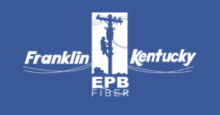Coosa Valley Electric Cooperative Brings Fiber to Rural Alabama
Talladega, AL has long been known as the epicenter of NASCAR, a sport synonymous with speed. In 1987, Bill Elliot set the fastest recorded time of 212.089 mph on that very track.
Cars aren’t expected to start racing down the Talladega Superspeedway track until late April, but the Coosa Valley Electric Cooperative (CVEC) chose the location to announce the fittingly super fast speeds it expects to begin serving up with its new broadband subsidiary, Coosa Valley Technologies, last Wednesday.
Unfortunately, many residents in Talladega County and surrounding counties have long gone without fast connectivity, with average speeds as low as 5 Mbps (Megabits per second).
CVEC often holds events at the Superspeedway, but for this event they wanted to make sure that since people were gathering, social distancing was possible. Also they wanted to communicate a message.
“It also served as a good backdrop for what we were trying to communicate, which was, we’re going to be provided the fastest broadband service in our area,” Jon Cullimore, CVEC Manager of Marketing and Member Services, told us in an interview as the cooperative prepares to embark on a fiber build intended to bring fast, affordable Internet access to everyone in its electric footprint over the next four years.
Driven by Membership
It all started in 2019 with feasibility studies conducted by two different firms. Both found a profound lack of broadband service throughout CVEC’s service territory, which is situated east of Birmingham.
When the studies were completed, CVEC quickly put together a comprehensive information packet for members to get educated before their annual meeting last September. The members were asked to vote on whether or not CVEC should form a new broadband subsidiary and embark on a new phase of life.
“We got the word out, and we had a record attendance at our annual meeting. We’ve never had that many members show up before,” Cullimore said. “I think we only had 12 ‘no’ votes out of all the [more than] one thousand people that showed up.”









